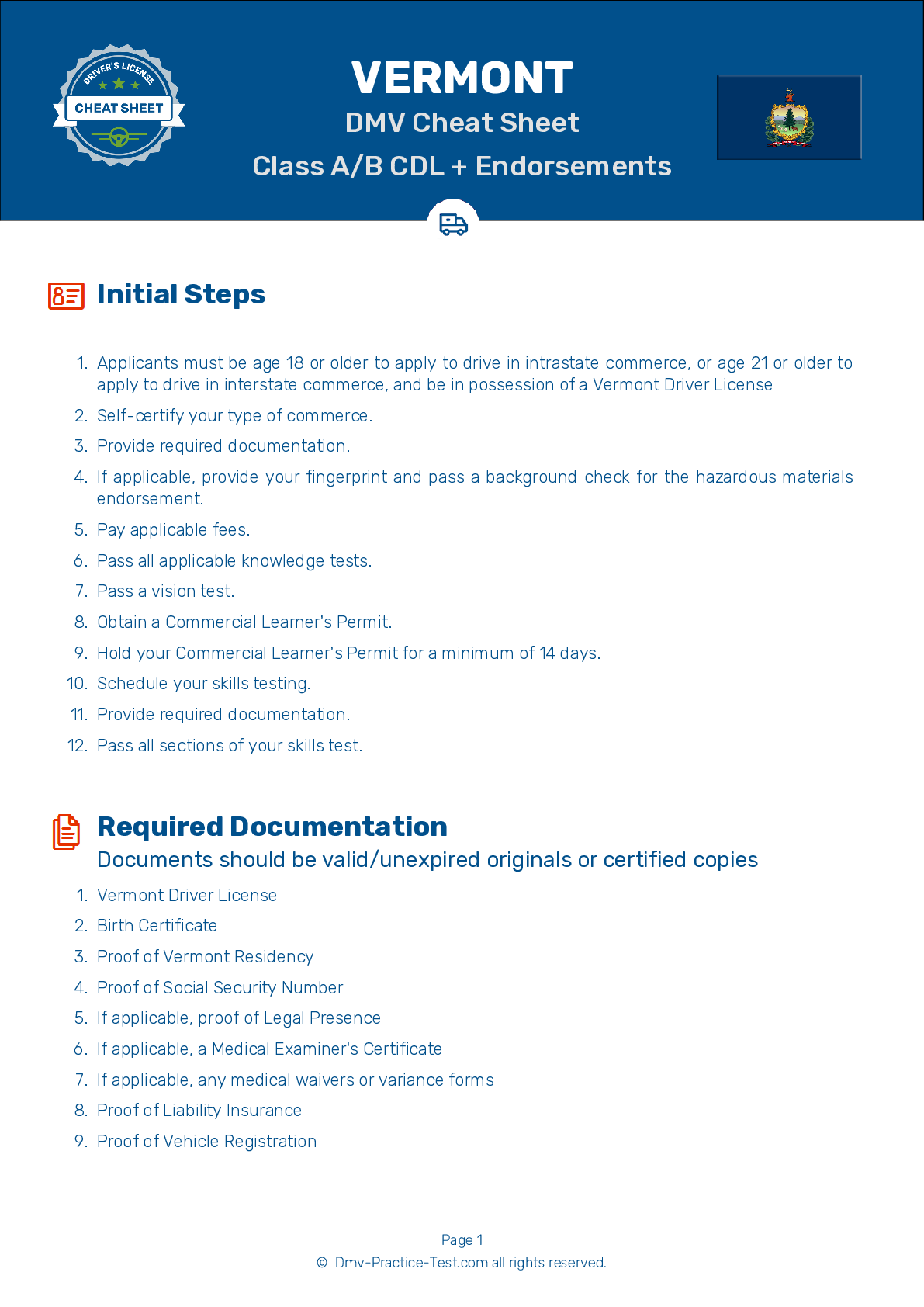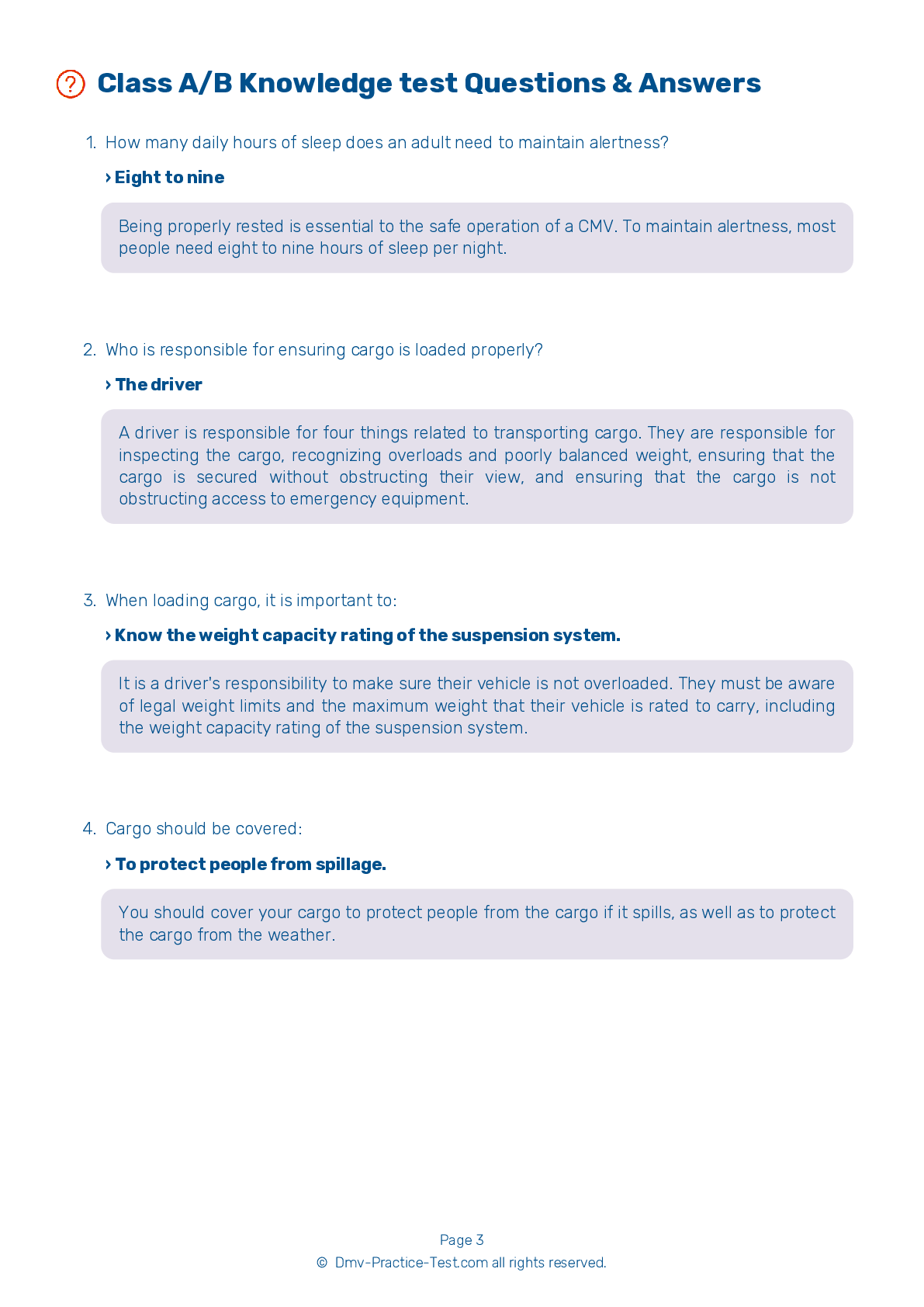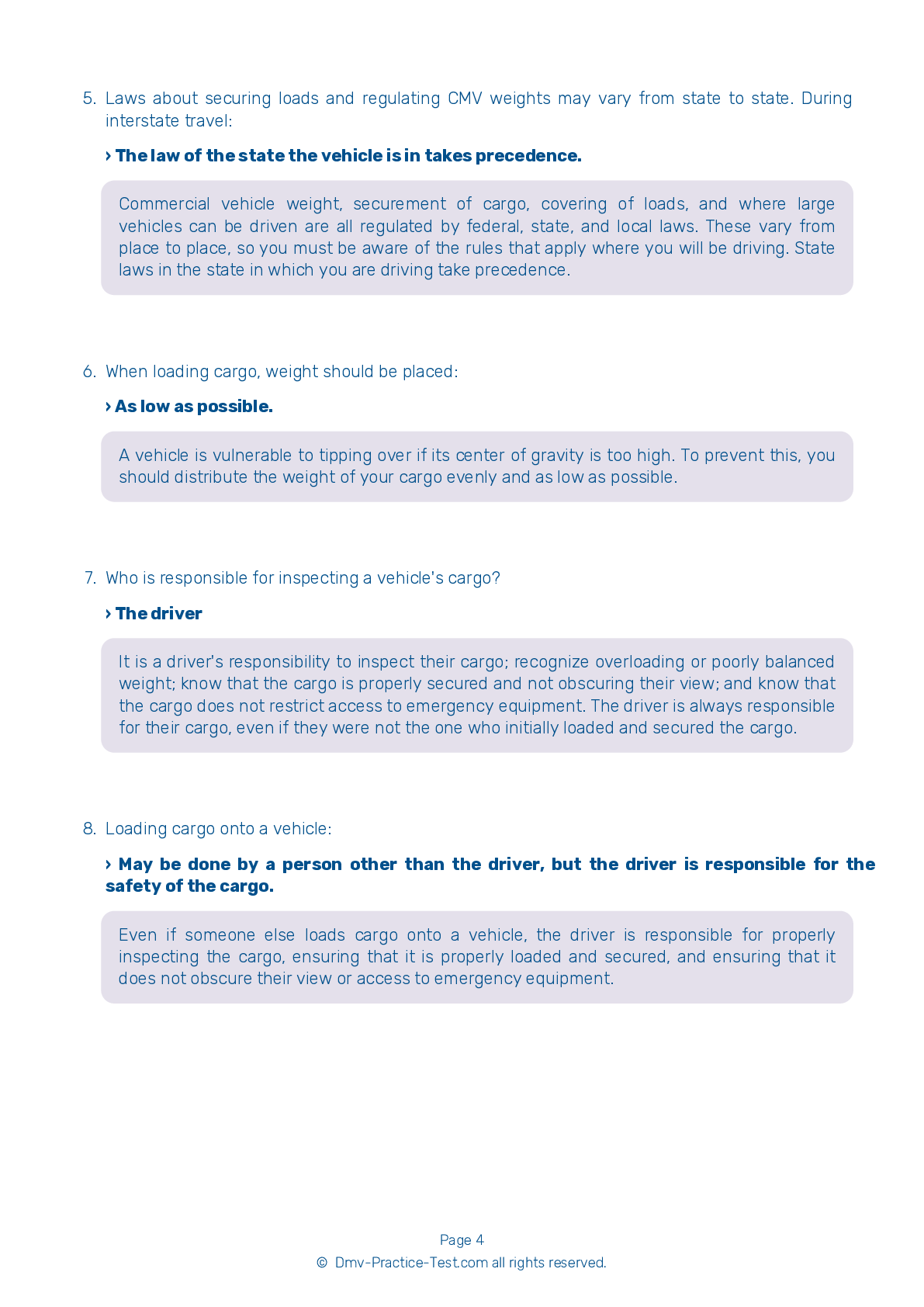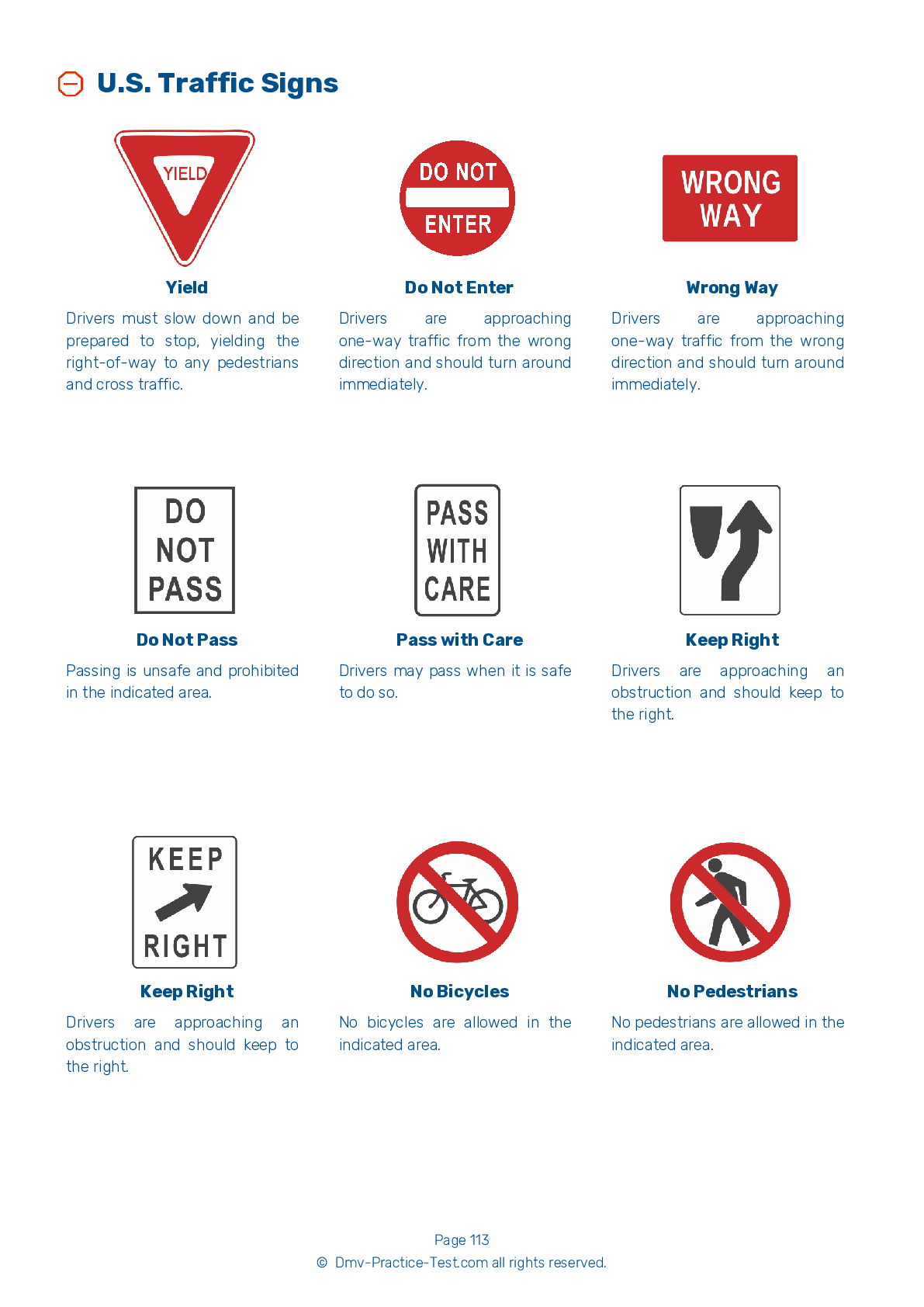HazMat #1
Hazmat Test | Vermont 2025 #1
On our website, we provide FREE practice - CDL hazmat test online! The official exam test consists of several obligatory parts, with all of them checking your knowledge of different blocks of road rules. If you need to obtain a VT CDL hazmat endorsement in 2025, practice as much as possible. Free sample tests published on our website will help you check and improve your knowledge and boost your grades. Please bear in mind that Vermont requirements for issuing a hazmat endorsement for CDL may vary from those established in other states.
30
24
20
1 . If transporting explosives:
If transporting Division 1.1, 1.2, or 1.3 explosives, you must follow a written route plan. Whenever placarded, avoid heavily populated areas, crowds, tunnels, narrow streets, and alleys. Be sure to research any restrictions that may apply to the routes you plan to take.
2 . When a shipper packages hazardous materials, they certify:
A shipper of hazardous materials must certify on the shipping paper that the shipment has been prepared in accordance with the rules.
3 . Hazardous materials may be transported:
You must have a CDL with a hazardous materials endorsement to operate a vehicle of any size that is used to transport hazardous materials.
4 . If you discover that your cargo is leaking, you should:
If you discover a leak in a cargo of hazardous materials, identify the materials in question by using the shipping papers, labels, or package location. Do not touch the leaking material.
5 . If you are transporting hazardous materials and the cargo catches on fire, you should:
Fighting a hazardous materials fire requires specialized training and equipment. Unless you possess these yourself, it is best to let emergency personnel deal with the fire.
6 . Containers of hazardous materials must be:
Containers of hazardous materials should be braced so they will not fall, slide, or bounce around during transportation.
2025 Vermont | Frequently Asked Questions
To secure a CDL Bus endorsement in Vermont, you need to have a valid Commercial Driver's License (CDL). You then need to pass the passenger endorsement knowledge test and the school bus endorsement knowledge test. After passing these tests, you must successfully complete a skills test in the type of school bus you will be driving.
To obtain a CDL Bus license in Vermont, you must have a valid driver's license and pass the CDL general knowledge test. Then, you'll need to get a Commercial Learner's Permit (CLP) and practice on public roads with a qualified CDL holder. After that, pass the CDL skills tests, which include vehicle inspection, basic controls, and road test.
While Vermont doesn't explicitly require specific training for a CDL Bus endorsement, it's highly recommended. Training can help you pass the written knowledge tests and the skills test, which includes pre-trip vehicle inspection, basic vehicle controls, and on-road driving. Experience in driving similar vehicles can also be beneficial.
CDL Bus licenses in Vermont are classified under Class B or Class C. Class B CDL is for single vehicles like city buses. Class C CDL is for vehicles designed to transport 16 or more passengers, including the driver, not covered by Class B. Each class requires passing specific written knowledge tests and skills tests related to the type and size of the vehicle.
No, you cannot use your personal vehicle for the CDL Bus driving test in Vermont. The vehicle used for the test must match the class and type of vehicle you will be driving with your CDL. For a bus endorsement, this means using a commercial bus of the correct capacity and type.
The CDL Bus driving test in Vermont evaluates skills like pre-trip vehicle inspection, basic vehicle control, and on-road driving. You may be asked to perform maneuvers such as backing up, parallel parking, or docking in a designated area. On-road driving evaluates your ability to handle intersections, railway crossings, curves, and various traffic conditions.
Yes, additional medical prerequisites are required for a CDL Bus endorsement in Vermont. Applicants must pass a Department of Transportation (DOT) physical examination every 24 months. This exam assesses general physical health, vision, hearing, and the potential presence of other conditions that could affect driving ability, such as diabetes or high blood pressure.
No, it's not permissible to transport passengers without a valid CDL Bus endorsement in Vermont. The endorsement is required for drivers who wish to operate a vehicle designed to carry 16 or more passengers, including the driver. Driving without the proper endorsement can result in legal penalties, including fines and suspension of your CDL license.
The CDL Bus endorsement can be added to your existing CDL license in Vermont. You don't need to apply for a new license altogether. However, you will need to pass the Passenger Endorsement Knowledge Test and a skills test in the vehicle type you wish to be endorsed for. Ensure to have your current CDL when you apply for the endorsement.
Yes, there are restrictions for drivers with a CDL Bus endorsement in Vermont. Drivers must comply with federal hours of service regulations, which limit driving hours to prevent fatigue. Also, drivers must pass a physical exam every two years and are subject to random drug and alcohol testing. Additionally, any traffic violations or accidents can result in the suspension or revocation of the endorsement.



